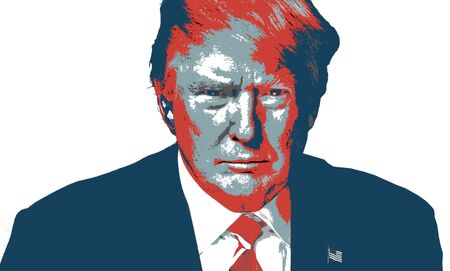特朗普执政刚满百天,已有七项经济承诺兑现

|
在总统大选期间,特朗普对于上台之后的“百日新政”曾做出过一些相当大胆的承诺。 截止到上周六,特朗普执政就满百天了,显然他在大选中做出的许多关于“百日新政”的承诺已经无法兑现了——比如他批判得最猛烈的奥巴马医改,由于废除和取代奥巴马医改的方案未能在共和党议员中达成共识,这项努力最终还是以失败收场。 特朗普的税改计划虽然已在上周三有了雏形,但是显然已经不可能在“百日新政”期间通过了。 很多给特朗普投票的选民或许还记得,特朗普曾经承诺要给中产阶层减税,同时还要在育儿和养老上进行个税扣减——这一点也得到了他女儿伊万卡的大力支持和宣扬。另外,当时说好的要将中国列为“货币操纵国”,现在也不提了。 不过这并不是说特朗普对他的大选承诺全部赖了账。在他执政的头100天里,至少他还是信守了以下7个经济方面的承诺。 1.退出TPP 上台数日便从TPP火速“退圈”,这让全世界都见识了特朗普雷厉风行的作风。特朗普刚到白宫第三天,就签署了美国退出泛太平洋合作伙伴关系协定(TPP)的行政令。TPP是奥巴马政府谈出来的一个贸易协定,不过它一直没有经过美国国会审批。TPP的成员主要包括日本、马亚西亚、越南、加拿大、墨西哥等太平洋沿岸国家。 美国政界的左右两翼都有批评TPP的声音,他们认为TPP会伤害到美国制造业的利益,造成大量工人失业。就连希拉里在这个问题上也反水了。她在奥巴马政府担任国务卿期间一度对TPP表示支持,可是一到她参选总统,她就立即做出了反对TPP的姿态。 等特朗普赢得了大选,TPP若是能够通过国会审核,那才成了怪事。现在没有了美国的参与,TPP的这个大架子实际已经成了空壳。 2.冻结联邦政府招聘 特朗普上台后的另一项改革,是按照此前大选期间的承诺,停止了联邦政府雇员的招聘。 他这样做的目标自然是为了精兵简政,但此举究竟会带来何种影响,现在还看不来。今年四月,白宫的联邦招聘禁令有所松动,不过白宫预算主任米克•马瓦尼指出,特朗普政府还没有彻底放开招聘禁令,而是打算用“更外科手术式的方案”来给联邦政府瘦身。 马瓦尼表示:“这并不意味着这些部门可以自由地胡乱招人。” 3.禁止前政府官员参与政治游说 特朗普专门签署了一项行政命令,禁止政府各部门的退休老干部在离职后参与对政府的游说活动,禁止期为五年,超过奥巴马此前规定的两年。 此项禁令还要求前白宫官员终身不得从事游说外国政府的行为。 另外特朗普还承诺过,要把国会官员从事游说美国政府行为的禁令延长至五年。据PolitiFact网站报道,依照现行法律,美国联邦议员在退休后一至两年内不得参与游说活动。如果特朗普想改变这一游戏规则,他可能得先说服国会推翻或修改那项法律才行。 4.拒领四十万,只拿一美元 特朗普把第一季度的全部薪水78,333美元都捐给了美国国家公园管理局。虽然批评他的人说他是在作秀,但他至少也算兑现了拒领总统薪水的承诺。 在本月初的一场发布会上,特朗普的新闻秘书肖恩•斯派塞代表特朗普,将一张象征性的支票递给了内政部长莱恩•辛克,随后表示,捐钱给政府“并不像你想象的那样简单”。 5.为争议输油管道放行 按照此前的承诺,特朗普政府批准了有争议的Keystone XL输油管道的建设。3月24日,美国国务院签署了跨加拿大输油管线的建设许可,从而为这条奥巴马时代被否决的输油管道扫清了障碍。 不过美国政府并未要求该管道一定要向特朗普之前承诺的那样使用美国产的钢材。 6.放松对能源行业的限制 上个月,特朗普签署了一项行政命令,推翻了奥巴马时代的几个标志性的能源规定。 在奥巴马时代被叫停的租赁联邦土地开采煤矿的做法,也随着这项行政命令被彻底松绑。另外特朗普政府也开始对奥巴马的《清洁能源计划》进行正式评估,此次评估的最终目的,是要废止或修改这项旨在对抗气候变化的环保规定。 7.每出台一个新规定,就要废除两个旧规定 本周特朗普在会见部分商业领袖时表示,他的政府要废除“75%或者更多”的旧规定。 为了大搞美国版的“简政放权”,特朗普于1月30日签署了一项行政令,要求联邦政府各部门每制定一项新规定,就要准备废除两项旧规定。当然,大部分规定在废除前必须经过漫长的评估和征求意见的流程,所以他的这项改革进度眼下还是很难衡量的。(财富中文网) 译者:朴成奎 |
On the campaign trail, Donald Trump made bold economic promises for his first 100 days in office. Now, as his 100th day nears on Saturday, it’s clear President Trump won’t be able to keep many of them. The most noteworthy perhaps is his pledge to repeal and replace Obamacare, which failed when he couldn’t bring Republican lawmakers to consensus. Tax reform certaily won’t be passed before the 100-day mark, even if a rough outline is nly won’t be passed before the 100-day mark, even if a rough outline is revealed Wednesday. “Voters will recall that Trump had promised large tax cuts for the middle class, as well as tax deductions for childcare and eldercare—a proposal championed by his daughter, Ivanka. The President also backed away from a promise to call China a “currency manipulator” on day one. But that’s not to say Donald Trump has completely reneged on his pledges to voters. Here are seven economic promises he did keep in the first 100 days. 1. Pulling out of TPP It took only a matter of days for the President to fulfill this promise. On his third full day in office, Trump signed an executive order withdrawing the U.S. from the Trans-Pacific Partnership trade deal. The pact, which was negotiated by President Obama’s administration but never approved by Congress, had included 12 nations bordering the Pacific including Japan, Malaysia, Vietnam, Canada, Mexico, and others. Critics on both the right and left argued hard that the deal would hurt U.S. manufacturers and could displace American jobs. Even Hillary Clinton, who had supported the agreement while serving as secretary of state in the Obama administration, argued against TPP on the campaign trail. By the time Trump won the election, it was a surprise to no one that TPP would not be ratified by Congress. And now, without the U.S. involvement, the behemoth trade deal is essentially dead. 2. Hiring freeze on federal workers In another one of Trump’s first actions as President, he followed through on a campaign promise to freeze hiring of federal workers. The goal was to reduce the federal workforce through attrition, but it’s unclear yet if the impact has been significant. The White House lifted the freeze in mid April, with budget director Mick Mulvaney noting that the administration was replacing it with a “a more surgical plan” to reduce federal jobs. "It does not mean that the agencies will be free to hire willy-nilly," Mulvaney said. 3. Ban on lobbying by former administration officials Indeed, Trump did pen an executive order banning executive branch officials from lobbying the U.S. government after they leave office. The restriction lasts five years, which is longer than the prior two-year ban imposed by President Obama. The directive also imposes a lifetime ban on former White House officials lobbying foreign governments. Trump had also promised to restrict congressional officials from lobbying the U.S. government for five years. As PolitiFact notes, federal lawmakers are already bound by law from engaging in lobbying activities for one to two years. Trump would have to convince Congress to override or amend that law if he wants to change the rules. 4. Refuse the $400,000 annual president's salary or only take $1 President Trump gave his entire first-quarter salary, totaling $78,333, to the National Park service. Although his critics dismissed it as a publicity stunt, the gesture does fall in line with Trump’s campaign promise to refuse his presidential pay. “It’s not as easy as you'd think" to give money to the government, Trump’s press secretary Sean Spicer noted earlier this month, after he handed over a ceremonial check to Interior Secretary Ryan Zinke. 5. Lift roadblocks on the Keystone Pipeline As promised, the Trump administration approved the construction of the controversial Keystone XL Pipeline. The State Department issued a permit to TransCanada on March 24, clearing the way for its construction after the Obama administration had blocked it. However, the pipeline will not be required to use American-made steel as Trump had originally promised. 6. Lift restrictions on the energy industry Last month, President Trump signed a sweeping executive order rolling back several of former President Obama’s signature environmental regulations. The executive order immediately ended a moratorium on new leases for coal mining on federal land and initiated a formal review of President Obama’s Clean Power Plan. The review is the first step in a more lengthy process aimed at repealing or changing the rule, which is aimed at combatting climate change. 7. For every one new regulation, two will be repealed When Trump met with business leaders during his first week in office, he told them his administration could cut regulations “by 75%, maybe more.” Along with that goal, Trump signed an executive action on Jan. 30, ordering that for every one new regulation issued, federal agencies must identify two existing regulations to be eliminated Most regulations have to go through a lengthy review and comment process before they can be revoked, so the progress of his measure is difficult to measure at this stage in the game. |













